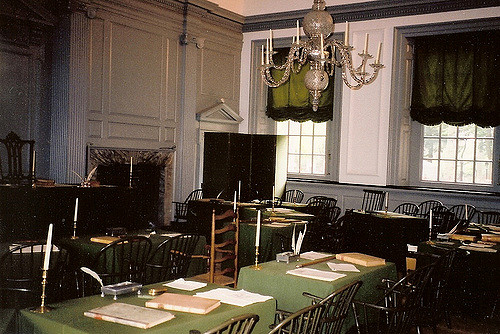
Research on racial attitudes finds that a more modern form of racism has emerged since the civil rights movement — people are less likely to assert biological differences between racial groups, but often utter statements that covertly reinforce racial inequality (“I’m not racist, but…” ). A recent study by Kasey Henricks suggests that such covert forms of racism were actually present in the speeches and debates about slavery during the framing of the U.S. Constitution.
Henricks and his research assistants examined over 1,000 pages of an archival collection at the Library of Congress called, A Century of Lawmaking for a New Nation, one of the largest and oldest collections of congressional records. They focus on the three-fifths clause debate, the clause that codified slavery into law, between Northern and Southern framers about how to “properly tax” the human bondage that the United States was built upon, as well as how to count slaves for state representation in Congress.
In these discussions, Henricks finds parallels to many of the same expressions and contradictions we see today. For instance, while many framers lamented that slavery continued to exist, they simultaneously refused to extend the same humanity and rights to slaves as they did to “freepersons.” Many framers stated their opposition to slavery, but nonetheless provided colorblind justifications for its continued existence. One of these justifications was the idea that slavery should be left up to local governance instead of federal intervention. Slaveholders also tried to distance themselves from any culpability by discussing themselves as “victims of circumstance” to a costly form of labor that made them more deserving of tax breaks. According to Henricks, these findings highlight how core American values were used to justify the continuation of slavery without ever having to explicitly discuss race.
These historical underpinnings of colorblindness illustrate that both our present and past are defined by forms of racism, overt and covert. In our current era, characterized by the reemergence of white supremacist groups and violence at Charlottesville, research must continue to demonstrate the multiple ways racism manifests itself and thus supports persistent inequalities, injustices, and violence.

Comments